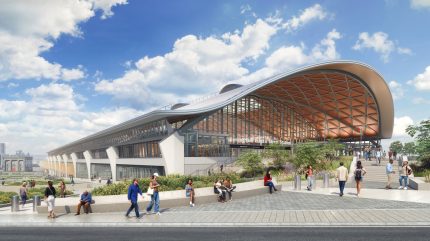
High Speed Two (HS2), an intercity railway project in the UK, has unveiled a series of enhancements to the Birmingham Curzon Street station’s design.
The proposed refinements are set to be submitted for approval to Birmingham City Council later this year.
The changes are intended to boost efficiency, as well as reduce the need for maintenance over the station’s projected 120-year lifespan.
The Mace-Dragados joint venture (MDJV), appointed by HS2 as the construction partner, is collaborating with design partners the Arcadis-WSP JV and Grimshaw, to progress the detailed design and construction of the station.
The team has been working on the proposed design refinements since the initial consent was secured from Birmingham City Council in 2020.
The station’s improvements entail the introduction of rainfall capture in planted areas, landscaping, lighting, paving, and seating spaces.

US Tariffs are shifting - will you react or anticipate?
Don’t let policy changes catch you off guard. Stay proactive with real-time data and expert analysis.
By GlobalDataPedestrian entrances will be more accessible, and the external ceramic tiling is set to be made durable.
The station will also have a more unified internal layout of the eastern concourse, allowing passengers to change platforms without leaving the ticketing area.
Construction on the station began earlier this year.
Major earthworks have commenced on the construction site, with foundation work scheduled to start in late 2024 and building work on the main station structure expected to begin next year.
HS2’s high-speed trains will operate on new infrastructure between London and Birmingham, aiming to reduce journey times and increase capacity on the existing mainline for local and freight services.
The railway system is anticipated to be operational between 2029 and 2033.
The aforementioned station’s arrival areas will also see improvements, including a redesigned southern entrance with simplified facades featuring washable and graffiti-proof coloured ceramic tiling.
The station’s roof material has been updated from timber to aluminium.
Additionally, subject to funding, space has been reserved for a potential future cycle hub.


